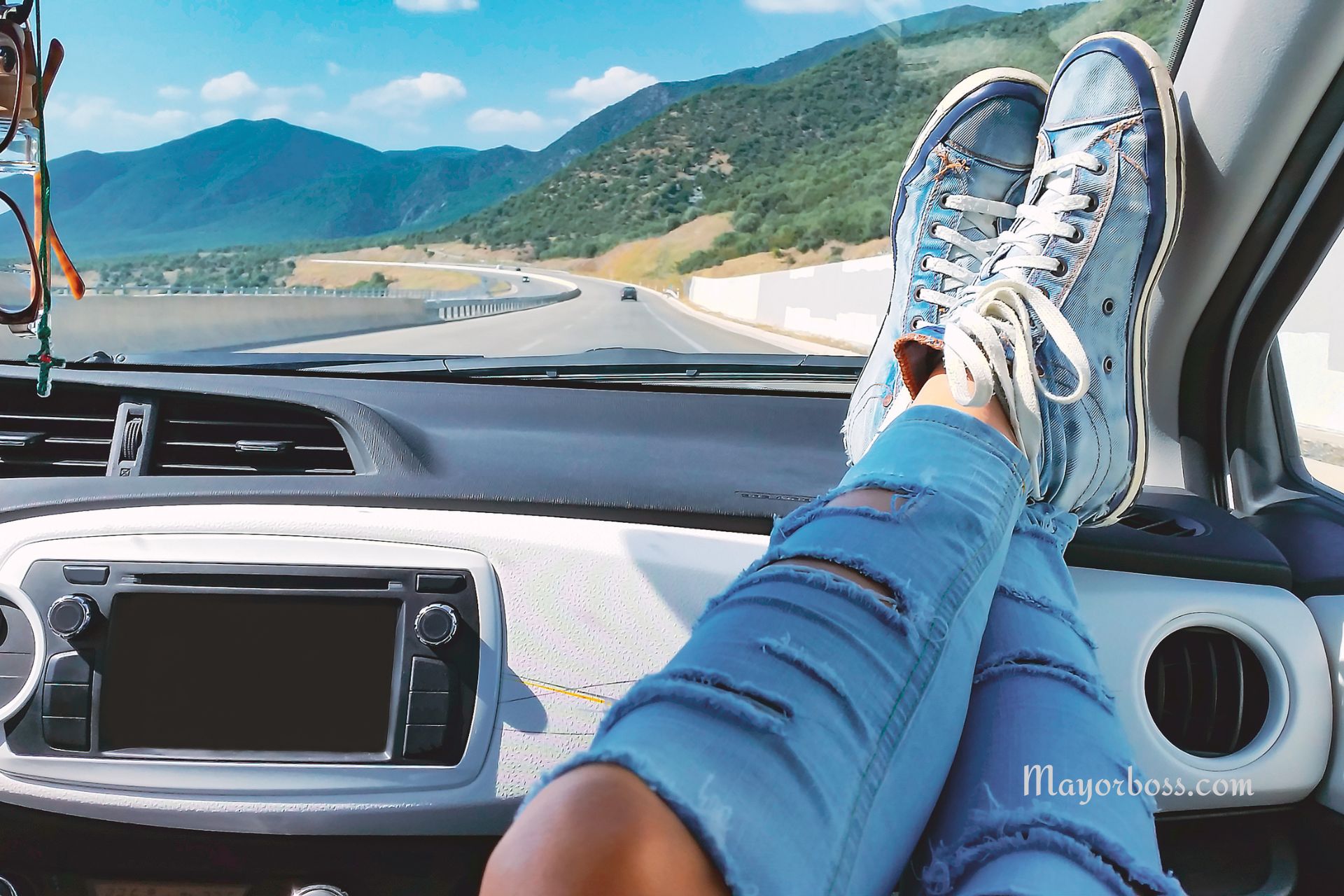Why You Should Never Put Your Feet on the Dashboard Again
Have you ever kicked back in the passenger seat, popped your feet up on the dashboard, and enjoyed the ride? It feels relaxing, doesn’t it? Well, I’m here to tell you why this common habit could be a lot riskier than you think. It’s not just about leaving smudges or upsetting the driver—it’s a safety issue that can have serious consequences.

The Hidden Dangers of Feet on the Dashboard
Airbags: A Life-Saver Turned Potential Hazard
Let’s start with the most critical reason: airbags. Airbags deploy at extreme speeds of up to 200 miles per hour to protect you during a collision. If your feet are on the dashboard and an accident happens, the airbag will launch your feet toward you. This can lead to devastating injuries such as broken bones, damaged ligaments, or even more severe outcomes. The thought of an airbag turning against you in this way is something worth considering next time you’re tempted to prop up your feet.
Risk of Severe Injuries in a Crash
Beyond the airbags, the position of your body when your feet are on the dashboard is just not safe if a crash occurs. In a normal sitting position, safety features like seat belts and airbags are generally designed to protect you as effectively as possible. However, if your feet are up, your body is more likely to move out of this optimal safety zone. Common injuries from this include shattered hips and broken noses or, even worse, spinal injuries. These aren’t just temporary setbacks but potentially life-altering injuries.
Impairment of Safety Features
Putting your feet up can also interfere with the proper function of your seatbelt. The seatbelt is designed to secure you by spreading the forces of a crash across your pelvis and chest, two of the strongest areas of your body. With your feet on the dashboard, your seatbelt can’t do its job properly. This alteration in position can lead to improper restraint during accidents, increasing the risk of slipping under the seatbelt or suffering from what is known as “submarining.”
Real Stories That Make You Think Twice
Think about Bethany, a woman whose life changed in a split second. She had her feet up on the dashboard when her husband’s car was involved in a minor collision. The airbag deployed, sending her knees into her face with brutal force, leading to extensive surgeries. Her story is a stark reminder of what’s at stake.
How to Stay Safe and Comfortable on the Road
Staying safe doesn’t mean you can’t be comfortable in the car. Adjust your seat back slightly if you need more legroom, or use footrests designed for passenger comfort that don’t compromise safety. These simple adjustments can help you enjoy the ride without putting yourself at risk.
Actionable Steps to Enhance Your Safety
- Always sit upright with your feet on the floor: It’s the best way to ensure that all safety features of the car protect you as intended.
- Adjust the passenger seat for comfort: If you need more space, slide the seat back rather than putting your feet up.
- Educate others: Share this information with friends and family. Awareness can save lives.
So next time you hop into the passenger seat, remember that keeping your feet on the floor isn’t just about following rules—it’s about protecting your own life and well-being. Stay safe, stay seated properly, and enjoy the journey with peace of mind.
FAQs
What if I’m just resting my feet on the dashboard while parked?
While it might seem safe when you’re parked, it’s best to avoid this habit altogether. It’s easy to forget to move your feet when you start driving again, especially on long road trips or quick stops.
Can putting my feet on the dashboard affect my insurance?
In the event of an accident caused by not following safety guidelines (like having your feet on the dashboard), insurance companies might reduce the compensation due to “contributory negligence,” where your actions contributed to the severity of the injuries.
Are there any car features designed to protect passengers with their feet on the dashboard?
No, there are currently no safety features in cars designed to protect passengers who rest their feet on the dashboard. All safety measures assume passengers are seated upright with their feet on the floor.
